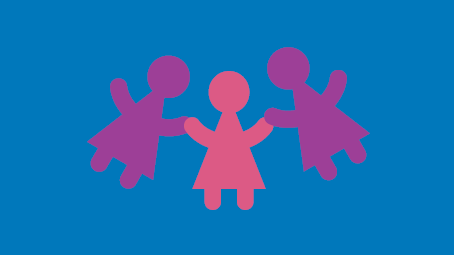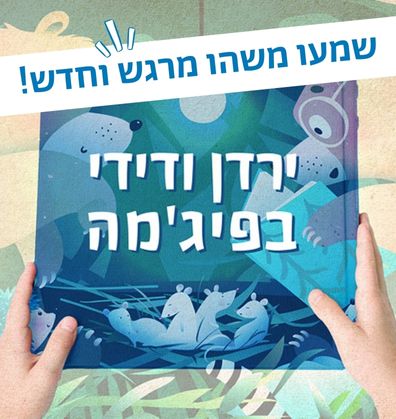מְקוֹרוֹת וְתַרְבּוּת
עלייה
אספנו עבורכם סיפורים שונים על עלייה לארץ. כל סיפור מזמין את הקוראים למסע מרגש של צבעים, ריחות וטעמים של ארץ אחרת, וחושף אותם לתרבויות, לשפות, למאכלים ולמנהגים שונים המחוברים כולם בחוט אחד של הזהות היהודית הישראלית. סיפורי עלייה מאפשרים לנו להכיר את החוויה המטלטלת ואת ההתמודדויות הכרוכות בה, להבין את תחושותיהם של ילדות וילדים שעלו לארץ ולהתחבר לשורשיהם ולסיפורם המשפחתי.
סְּפָרִים
Book-Related Family Activities

By which to remember where you came from
After reading this book, you can discuss the importance of family. Share memories of intimate and special moments shared with grandparents. You can discuss your family’s roots, cuisine, and culture, as well as any heirlooms and items that are passed in your family.
My Own Special Reminder
Do you also want to have an item to remember things by and help you overcome difficulty and loss? You can use beads to make a necklace or bracelet, paint a pebble, or any other good idea, and then decide what to do with this it to be reminded of something or cheer up: Twist it? Squeeze it? Stroke it? Move it to your other hand?

Homemade Cookies
Which cookies remind you – the parents – of your childhood home? This book can inspire you to bake cookies together, or prepare any other dish that connects you to your roots, family, and home.
Listen to the Story
Listen to Yarden and Didi tell the story of Shoham’s Bangle on the Sifriyat Pijama podcast.

Arts & crafts, songs, and other activities can be found on the Sifriyat Pijama Pinterest page.
Family reading advice
Simachi’s Big Day is a long book. We therefore recommend reading it in two parts, pausing at the point where Simachi wonders why her brother, Avram, is dressed in his best clothes, and reading the rest the next day.
Memories
In this book, Grandma is recalling her childhood memories. This is your chance, as parents, to share special moments from your own childhoods too. Talk about the things you did, those you never thought you would do, or the relationship between you and your siblings. Ask your children: Can they recall special things they did and, looking back, surprised them because they made them discover their own abilities?
Listening to Simachi
What does the story sound like? Scan the code and listen to the story while looking through the book.
A pineapple on my head
Avram and Nemi play a game by walking with a pineapple on their head and seeing who lasts longer without dropping it. You can also play a similar game: choose an item that you can put on your head – a pillow, toy or box, and find out: Which of you can walk while keeping it on your head? And how far?
Following the sea
The book describes many seaside activities: the fish moving, rowing, swimming, bringing fishnets in, sailing or flying a flag on the boat’s flagpole. You can choose one of these activities, and mime it. Your family will need to guess which activity you meant, and look for it among the book’s illustrations. Good luck!
Proposed Family Activities:
- This book is based on a true story. Perhaps your child could read it with a member of an older generation, such as a grandparent, uncle or aunt. Wouldn’t it be wonderful if by doing so, you will learn some family stories you had not heard before? It may be advisable to make an audio, video or hand-written record of them!
- You may enjoy leafing through the book together and pointing out signs of the time that have been incorporated into the illustrations. Perhaps you could look for old photographs of family members at home, and focus on the clothes, hair styles, and various objects they had back in their homelands.
- Where has your family come from? How many generations has your family been living in Israel? You may want to open an atlas, place some tracing or parchment paper on top of the world map, and draw arrows on it to mark the journey made by your family before coming to Israel. You could also use online software, such as Google Maps, to take a virtual tour of your family members’ homelands.
- Do you also have a personal or family dream? It may be fun for each member of your family to write down their dream on a piece of paper, insert it into an empty bottle, and seal it with a cork or top. You can return to your bottles in a year, and check whether the dreams you wrote came true.
- The new olim in this book have different customs, languages, and clothes. Sometimes, different customs, clothes, and traditions can be found within the same family. How about teaching your children some words in their grandparents’ mother tongue? Or reminding one another of your special family traditions and songs.
- The two new olim in the book sing a liturgic song together, originating in Psalms and found in the Hallel prayer:
“בצאת ישראל ממצרים בית יעקב מעם לועז…”
Do you know the tune to this song? How about singing it together? You could also look up other tunes online at www.zemereshet.co.il.
The five senses
The five senses: You may enjoy reading this book together, and trying to discover with your child how sight, hearing, taste, smell and touch help Alicia’s mother preserve her memory of the snow she misses so much. Can you find where all five senses appear in the story together?
When we were kids…:
When we were kids…: Alicia’s mother misses her childhood snow. What do you miss? Which of your childhood stories does your child know? What has changed since you were kids, and which of your child’s experiences are similar to the ones you have had? Perhaps this story could prompt you to share your childhood memories with your child, and compare your experiences.
Aliyah stories
Aliyah stories: You may want to search for your family members’ country of origin in the atlas together, and trace their journey to Israel. Which challenges and successes did they experience on the way? What do they like about Israel, and what about their faraway country do they miss? You could look for old pictures, clothes or other items, and share family immigration stories with your child.
Remembering with your senses
Remembering with your senses: Alicia’s mother says snow has a taste and smell. Perhaps you would like to close your eyes and go on a journey together; remembering the scents, flavors, sounds and sights of the swimming pool or beach in summer, of rain on the window pane in winter, of home on the eve of a Holiday, and so on. You could choose one shared memory and draw it together.
A personal gift – not just on your birthday
A personal gift – not just on your birthday: how do we pick a good gift? We try to understand what others like, and might make them happy! Perhaps you could think of a family member or neighbor, and make them a special, personal gift that would surprise and delight them.
Memory box
Memory box: Perhaps you might like to take a walk around your house and yard, and try to think what you would remember about them in a few years’ time. What would you miss? You may enjoy making a memory box together, and filling it with the scents and tastes of home – a much-loved family recipe, soap-scented stationary, a family photo, and other memories that would be fun to remember in the future.
Did you know where the name Sabich originated before reading this story?
What do you know about your own family members’ names? Are they biblical? Are any of you named after a relative? Perhaps, like Sabba Sabich, your name or your child’s comes from a foreign language? You may want to discuss your names, their origin and meaning together, and tell your child what made you choose their name for them. Perhaps your child would enjoy making a decorated sign with their name on it, and hang it on their bedroom door.
Sabba Sabich came to Israel from Iraq. Where did your family come from?
How long has your family been living in Israel? Which country did it come from? Perhaps you could make a world map, and draw arrows on it denoting the path travelled by your family until their arrival in Israel. You may wish to share your own immigration stories with your child, or those of their grandparents. What did you like about the country you came from? What do you like about Israel? What sort of hardships and successes did you experience? Has any member of your family changed their name upon arrival in Israel?
Sabba Sabich says each community brought with it "a language, songs, names, and traditions"
You may want to teach your child a few words in the language spoken by their grandparents. Together you could recollect special customs and songs, which you could teach and sing with your child. They could also read this book with older members of the family, such as uncles, aunts, or grandparents. Perhaps by doing so they will be told more family stories they had not heard before.
Do you make Sabich for breakfast?
Pizza, falafel, kreplach, Jahnun... Which dishes are typical of your community? You may enjoy preparing a special meal together consisting of dishes typical to your family’s place of origin. You could teach your child how to make traditional food, and even create a family cookbook.
Keren and Or in making Sabich together!
Ingredients for home-made Sabich
- Hard-boiled eggs
- Sliced, fried eggplant
- Finely chopped salad
- Pitta bread
- Hot sauce (Schug), Amchur (Amba) (optional)
- Hummus
- Tahini
Method:
Peel the eggs (ask your child to look for the description in the book!), place one pitta bread on a plate and put hummus on it, with or without hot sauce (schug) or amchur (amba). Add the eggplant, sliced egg, and salad.
Season with salt and pepper, and put a spoonful of tahini on top.
Bon Appetit!
Enjoy reading and discussing the book together!
האזינו לסיפור המדינה של ילדי הגן
אנו מזמינים אתכם/ן להאזין לסיפור “המדינה של ילדי הגן”, מאת: אמונה אלון | איורים: מנחם הלברשטט | הוצאת: ידיעות ספרים (גנים)
יוצרים ומגישים – ירדן בר כוכבא – הלפרין ודידי שחר
מוזיקה ונגינה – טל בלכרוביץ’
פתיח – דידי שחר
מגישים – יובל סגל, אפרת אביב ותומר שרון.
אקורדיון וחלילים – סלעית להב
מוכנים/ות? מת – חי – לים!

Family Activities
Menachem Halberstadt’s wonderful illustrations speak to the adults reading the story as well as the children, and hint at well-known historical personae and experiences. Even the teddy bear is wearing a hat from the days of the Palmach! Look closely at the illustrations together with your child and share the country’s history with them. See if you can find pictures depicting Theodore Herzl, David Ben Gurion, and dancing the hora in the streets of Tel Aviv.
Adi points to some pictures of famous photographs depicting stories of immigrants. Ask your child to show you these pictures and try to guess from which countries the different immigrants came. You can take out an atlas or map of the world, and look for the places where your family lived throughout the generations and where you have relatives outside Israel today.
The children in the story act out an imaginary version of “building the country”, which initiated in the make-believe corner of the kindergarten. Your child can also dress up in costume and choose a task in building the country.
You too can “build a country”. Let your imagination run wild: How will you call your country? Who will live in it? Which buildings are needed? Will it have a flag? You are invited to send us a photograph of the country you created, and we’ll post the picture on the Sifriyat Pijama website pj.crunchcart.com .
It is not always easy to join in to an existing group and find your role in it. The story can provide an opportunity for you and your child to discuss the emotions of the characters in the book, and for you to share with them your own life experiences – in your personal life, and on the national level.
The building of the State of Israel is a process that has not come to an end, and more new immigrants are likely to join the country in the future. David, the new oleh in the story, brings a toy plane with him to the game. What would you propose new immigrants bring with them to continue building and improving the state?
A number of well-known songs greet new olim as they arrive in Israel. You can organize a sing-along one evening in your home and sing such favorites as “Heveinu shalom aleichem”, “Am Yisrael Chai”, and “Hineh ma tov u ma na’im”.
Family Activities:
1. Noa is very attached to the old doll that her grandmother made for her, but also likes new dolls and toys. You can ask your children which dolls and toys they like in particular, and remind them who gave them the gifts and under which circumstances.
2. Mr. Minasa tried to get rid of his old shoes when he arrived in the new country. You can play an imaginary game with your children: If you were leaving for a faraway place, what would you take with you and what would you leave behind?
3. Like Grandmother Agarnesh, you too can craft a hand-made doll for your child, using old socks and clothing. You are invited to send us a photograph of the doll, which we will happily post on the Sifriyat Pijama website!
4. Mr. Minasa arrived in the new country from Ethiopia. Where did your family originate? This is an opportunity to share your personal immigrant story with your children, and show them photographs of the old country. Perhaps you too have old bjects or clothing that you can search for together.
5. Mr. Minasa’s neighbors recognized his old shoes and returned them to him. Did you ever find something and return it to its owner? Was the owner happy to receive the lost object?
6. You can act out the story with your children. Each one in turn takes on the role of Mr. Minasa and looks for places around the house to hide the shoes. The other player finds them and declares, “Oh, here are Mr. Minasa’s old shoes!”

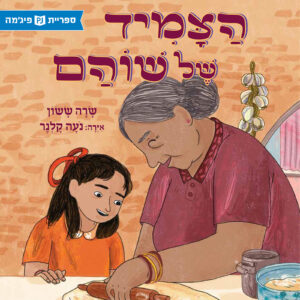 Shoham’s Bangle
Shoham’s Bangle 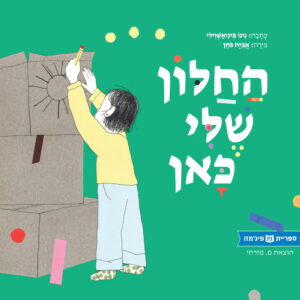 My Window is Here
My Window is Here 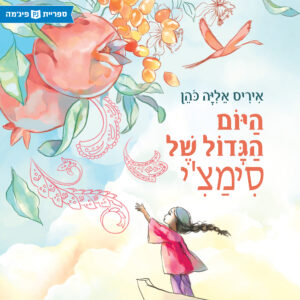 Simachi’s Big Day
Simachi’s Big Day 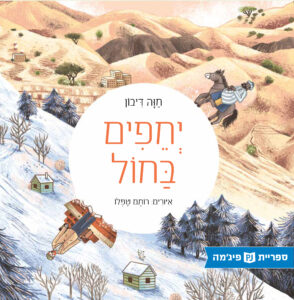 Barefoot in the Sand
Barefoot in the Sand 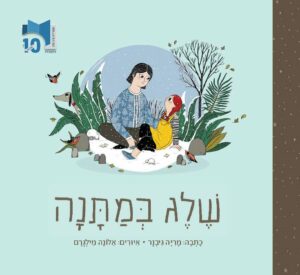 A Gift of Snow
A Gift of Snow 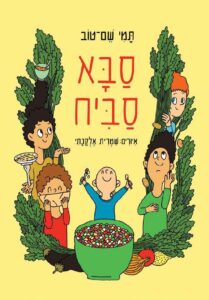 Sabba Sabich
Sabba Sabich 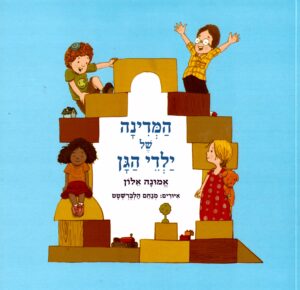 Land of Preschool Children
Land of Preschool Children 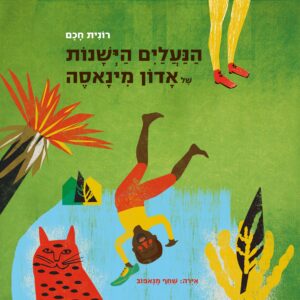 An Old Pair of Shoes
An Old Pair of Shoes 


